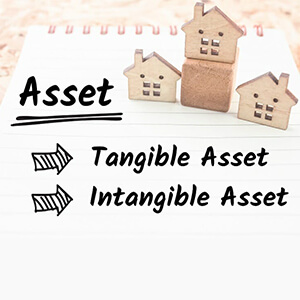Introduction:
The term ‘asset’ in the business world reflects to something ‘imperative’ and of great value, helping in accelerating income and unraveling other benefits in overall operations of the entities. It should be in our best interest that ‘assets’ are highlighted in a balance sheet either being intangible or tangible in nature.

It is a source ensuring that entities are not deprived of the value as ‘assets’ can be sold in various conditions for benefits of the companies. Therefore, if a company runs out of funds to pay its debts, it is recommended selling off remaining assets which results in acquiring market stability.
Tangible Assets:
Baffled? Consider ‘tangible assets’ as ‘physical assets’, the ones that can be touched and visualized. Furthermore, such assets are not sold off as long as the business operations are running. For example: A wise incorporation would never auction off its main equipment, land and its fleet of cars to gain lucrative figures for its bank account. These assets are highlighted in the balance sheet and are of great importance in the business.
Intangible Assets:
The ‘intangible assets’ are considered the opposite of ‘tangible assets’, as such elements are not seen or experienced in a real world, which terms them as ‘non-physical’ in most of the accounting books. It includes ‘domains’, ‘brand names’, ‘databases’ and so on.
It should be in our best interest that ‘intangible assets’ are mentioned on the other hand of the balance sheet. In addition, various accounting gurus have confirmed that ‘intangible assets’ should be noted with a prominent approach as they assist in increasing future profits of the company.
Breaking Down Tangible and Non-Tangible Assets:
- Cash at Bank (Tangible)
- Cash at Bank (Tangible)
- Equipment (Tangible)
- Land (Tangible)
- Company’s Website (Intangible)
- Company’s Software (Intangible)

